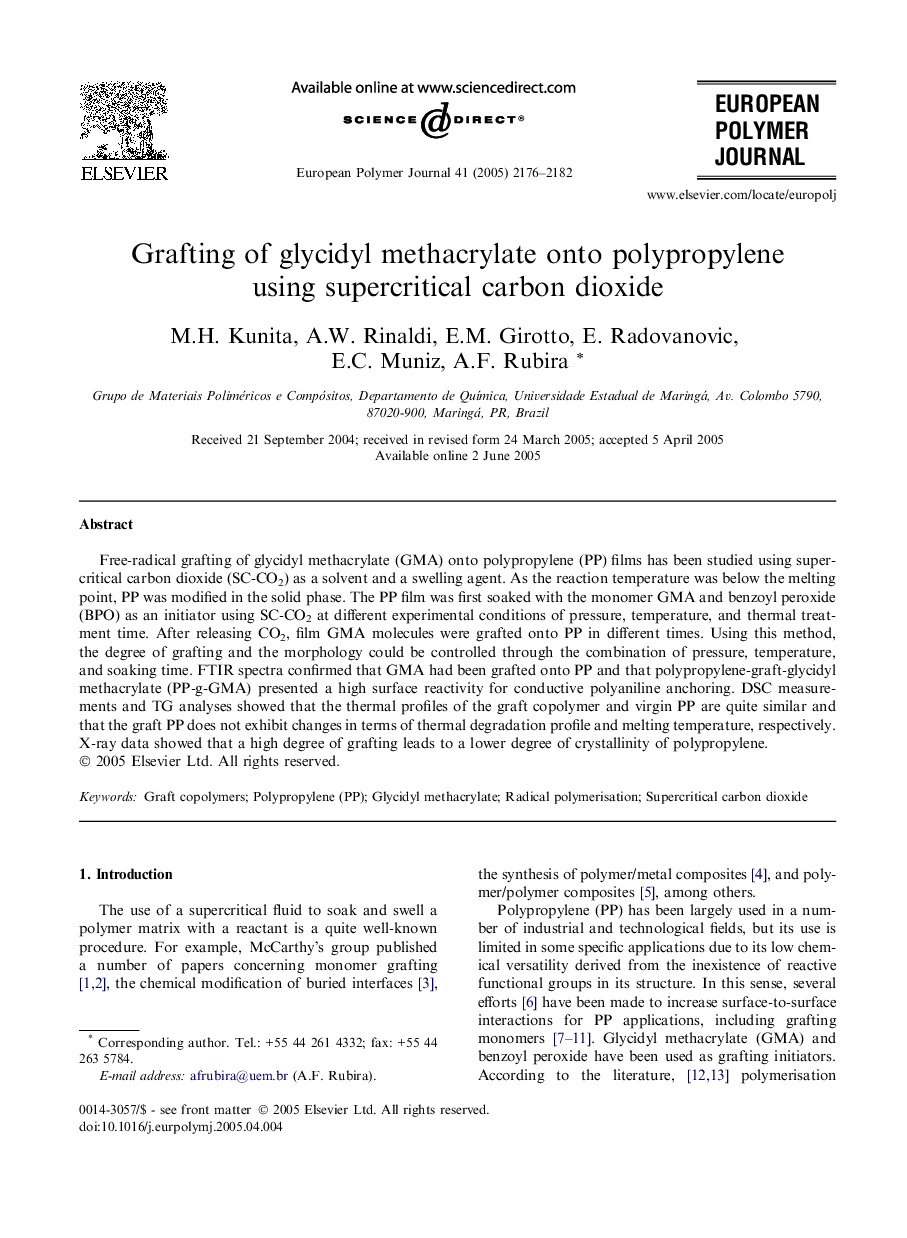| Article ID | Journal | Published Year | Pages | File Type |
|---|---|---|---|---|
| 1401488 | European Polymer Journal | 2005 | 7 Pages |
Free-radical grafting of glycidyl methacrylate (GMA) onto polypropylene (PP) films has been studied using supercritical carbon dioxide (SC-CO2) as a solvent and a swelling agent. As the reaction temperature was below the melting point, PP was modified in the solid phase. The PP film was first soaked with the monomer GMA and benzoyl peroxide (BPO) as an initiator using SC-CO2 at different experimental conditions of pressure, temperature, and thermal treatment time. After releasing CO2, film GMA molecules were grafted onto PP in different times. Using this method, the degree of grafting and the morphology could be controlled through the combination of pressure, temperature, and soaking time. FTIR spectra confirmed that GMA had been grafted onto PP and that polypropylene-graft-glycidyl methacrylate (PP-g-GMA) presented a high surface reactivity for conductive polyaniline anchoring. DSC measurements and TG analyses showed that the thermal profiles of the graft copolymer and virgin PP are quite similar and that the graft PP does not exhibit changes in terms of thermal degradation profile and melting temperature, respectively. X-ray data showed that a high degree of grafting leads to a lower degree of crystallinity of polypropylene.
